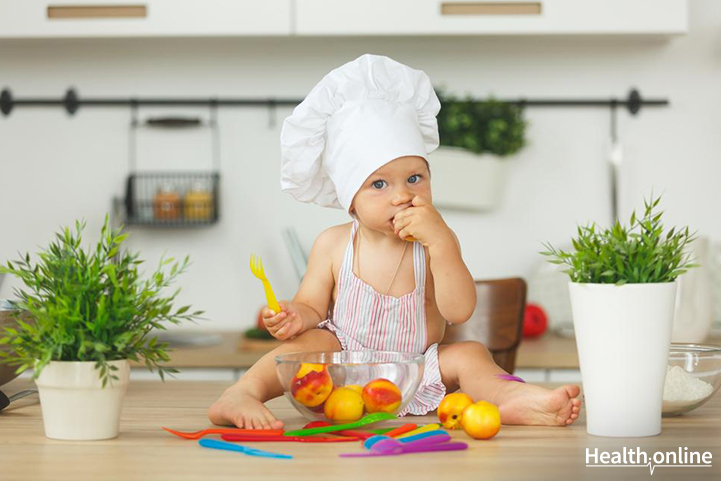
Baby-Led Weaning: All You Need To Know
Parents give their babies soft baby food, once they turn 5-6 months. It’s nice to pressure cook apples, puree peas and broccoli, and mash bananas with rice or milk. But nowadays mothers are opting for what is now popularly known as baby-led weaning (BLW). BLW refers to small food particles which are bite-sized pieces (or finger food) for your baby. The practice has been popular in the UK for over a decade and is now gaining momentum in the US as well. It is an extremely beneficial practice, as has been proven by pediatrics worldwide.
- BLW introduces the idea of ‘chewing’ into your baby’s mind.
- BLW helps babies learn how to use their gums and teeth first, before swallowing the food directly, as they would do more commonly with mashed and pureed baby food.
- BLW prevents babies from simply swallowing the food, stops them from gagging, and helps them decide exactly how much they want to put into their mouth.
- BLW helps your infant to regulate his/her food intake; your child will begin to realize when he or she is full and stop eating.
- BLW is a good way to teach your child to automatically be receptive to all foods; meat, fish, peas, and greens, even bitter tasting food products, which is beneficial in the long run.
Does this mean you skip baby food for good? Well, that’s up to you, and as a parent, it’s best to judge your child’s need accordingly. But most pediatricians suggest that starting slow is the key. You don’t have to completely do away with baby food products; an intermittent pattern of finger-foods that your baby can munch in-between short meals is a good idea.
Recommended Read: Healthy Snack Recipes Your Kids Will Love
Here are some do’s and don’ts of BLW.
The Do’s
-Wait until your child is able to sit in a high-chair by himself/herself.
-Be patient. Though most 6-month olds are able to self-feed, it might take some infants 9 to 12 months to develop the necessary chewing skills and hand-to-mouth coordination.
-Assist your child but don’t spoon-feed; pull up a chair and interact with your baby as they eat, supervising when necessary and letting them eat on their own, unless absolutely necessary to intervene.
-Begin with softer foods, such as steamed carrots, baby cucumbers, ripe fruits, shredded chicken and meats, cooked vegetables, flaked fish, etc.
-Choose foods that your baby can pick-up easily. Cut vegetables into thin strips like fries, or use a crinkle-cutter for round-shaped bites; these are easy for a baby to grasp on to.
-Be ready for a mess, especially with green foods, and avoid serving in a bowl or plate unless you want to find flying saucers everywhere. Serve directly onto the tray of your baby’s high-chair and be prepared to give it a bath later on. Don’t forget to buy a bib, large enough to cover their front.
-Serve them iron and nutrient-rich food; even though your baby will be getting his source of nutrients and iron from breast milk, his intake is light to decrease after the 6-month scale. Add meals rich in zinc, protein, iron, healthy fats and minerals in their diet.
-Refer to baby good guides online, if you need any advice from other moms.
The Don’ts
-Do not leave your child alone when he eats, no matter how ‘safe’ the baby food is.
-Avoid food such as grapes, raisins, raw vegetables, nut butter that are sticky and gluggy, and food that might pose a choking hazard. Check for allergic reactions, especially when it comes to nuts, fish or seafood, and introduce new meals only after every couple of days.
-Choose a regular time for meals, one when you and baby are both fresh, versus late at night and late noon. Don’t feed your baby when he’s tired or cranky.
-Don’t give up on regular baby food altogether. Just shift to chunkier purees with a bite or small pieces they can chew, and feed it to them slowly, one spoonful at a time.
Recommended Read: 9 Healthy Meals for Kids and Toddlers
Keep yourself updated with the latest on Parenting . Like us on Facebook and follow us on Twitter for more on Health and Family Planning & Pregnancy . Also, check out our Health Tools and try out our health-related Quizzes .




